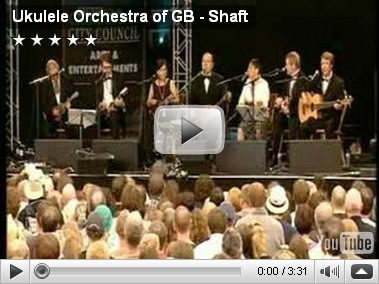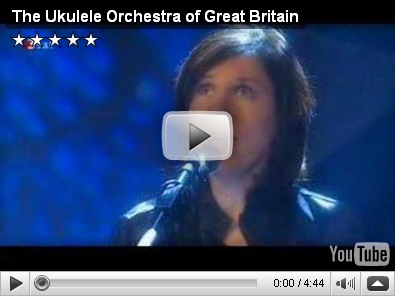Treading outside of public domain works for just a few minutes, I’d like to call your attention to a series of videos on YouTube by a terrific musical comedy ensemble named the The Ukulele Orchestra of Great Britain.
I confess that I am particularly enamored with this group. Part of it is the sheer absurdity of it all.
Dressed up like symphony musicians, sitting in 7 or 8 chairs on a bare stage, and wielding of all things . . . ukuleles. Some of which look well worn and battered (the instruments, not the performers).
You expect that this is all some giant put on. That there would be no way that you were about to be regaled with real music.
But you’d be wrong.
They have their own website http://www.ukuleleorchestra.com and offer DVD’s of their performances for sale. But you can get a sneak peak at their act by viewing the videos on their site - or by watching some of the clips available on YouTube.
Started as a bit of a lark in 1985, TUOGB sold out their first concert and have been going strong for 25 years. Members have come and gone over the years, but the fun, and the finesse remain.
Visit their website for more information about the group, and please, if you like it, consider buying a DVD (they make a great gift).
But for now, a small sampling from the video archives.
Prepared yourselves to be wowed.
Well start with a standard British Music Hall number, often performed on the Ukulele. That’s right. You guessed it!
The Theme From Shaft.
Absurd? Sure . . . and that’s the beauty of it all. But hang on, try this one on for size. And be sure to watch for some inspired antics of the members starting about 90 seconds in.
You’re probably getting the idea now.
Next up, The Good, The Bad, and The Ugly.
And last, but certainly not least, an amazing vocal number. Fly Me To The Handel. Stay with this to the end. It is truly remarkable.
Want more? No problem. Go to their website and order their DVD, or follow this link on YouTube to get more samples.
And Enjoy!

















